University of Bologna
The University of Bologna (Italian: Università di Bologna, UNIBO) is a research university in Bologna, Italy. Founded in 1088 by an organised guild of students (hence studiorum), it is the oldest university in the world,[2] as well as one of the leading academic institutions in Italy and Europe.[3] It is one of the most prestigious Italian universities, commonly ranking in the first places of national rankings.[4][5]
Università di Bologna | |
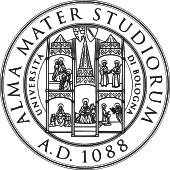 | |
| Latin: Universitas Bononiensis | |
| Motto | Petrus ubique pater legum Bononia mater[1] (Latin) |
|---|---|
Motto in English | St. Peter is everywhere the father of the law, Bologna is its mother |
| Type | Public |
| Established | c. 1088 |
| Rector | Francesco Ubertini |
Academic staff | 2,850 |
| Students | 86,509 |
| Undergraduates | 63,781 |
| Postgraduates | 19,119 |
Doctoral students | 3,877 |
| Location | Bologna , Italy |
| Campus | Urban (University Town) |
| Sports teams | CUSB |
| Colours | Red |
| Affiliations | Coimbra Group, Guild of European Research-Intensive Universities, Utrecht Network, UNIMED |
| Website | www.unibo.it |
It was the first place of study to use the term universitas for the corporations of students and masters, which came to define the institution (especially its famous law school) located in Bologna, Italy.[6] The university's emblem carries the motto Alma mater studiorum ("nourishing mother of studies") and the date A.D. 1088, and it has about 86,500 students in its 11 schools.[7]
It has campuses in Ravenna, Forlì, Cesena and Rimini and a branch center abroad in Buenos Aires, Argentina.[8] It also has a school of excellence named Collegio Superiore di Bologna. An associate publisher of the University of Bologna is the Bononia University Press.
History
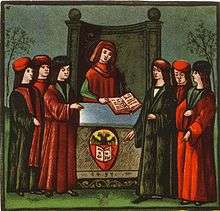
The date of its founding is uncertain, but believed by most accounts to have been 1088.[6] The university was granted a charter (Authentica habita) by Holy Roman Emperor Frederick I Barbarossa in 1158, but in the 19th century, a committee of historians led by Giosuè Carducci traced the founding of the University back to 1088, which would make it the oldest continuously-operating university in the world.[9][10][11] However, the development of the institution at Bologna into a university was a gradual process. Paul Grendler writes that “it is not likely that enough instruction and organization existed to merit the term university before the 1150s, and it might not have happened before the 1180s.”[12]
The university arose around mutual aid societies (known as universitates scholarium) of foreign students called "nations" (as they were grouped by nationality) for protection against city laws which imposed collective punishment on foreigners for the crimes and debts of their countrymen. These students then hired scholars from the city's pre-existing lay and ecclesiastical schools to teach them subjects such as liberal arts, notarial law, theology, and ars dictaminis (scrivenery).[13] The lectures were given in informal schools called scholae. In time the various universitates scholarium decided to form a larger association, or Studium—thus, the university. The Studium grew to have a strong position of collective bargaining with the city, since by then it derived significant revenue through visiting foreign students, who would depart if they were not well treated. The foreign students in Bologna received greater rights, and collective punishment was ended. There was also collective bargaining with the scholars who served as professors at the university. By the initiation or threat of a student strike, the students could enforce their demands as to the content of courses and the pay professors would receive. University professors were hired, fired, and had their pay determined by an elected council of two representatives from every student "nation" which governed the institution, with the most important decisions requiring a majority vote from all the students to ratify. The professors could also be fined if they failed to finish classes on time, or complete course material by the end of the semester. A student committee, the "Denouncers of Professors", kept tabs on them and reported any misbehavior. Professors themselves were not powerless, however, forming collegia doctorum (professors’ committees) in each faculty, and securing the rights to set examination fees and degree requirements. Eventually, the city ended this arrangement, paying professors from tax revenues and making it a chartered public university.[14]
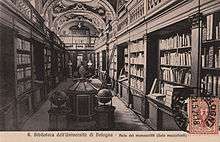
The university is historically notable for its teaching of canon and civil law;[15] indeed, it was set up in large part with the aim of studying the Digest,[16] a central text in Roman law, which had been rediscovered in Italy in 1070, and the university was central in the development of medieval Roman law.[17] Until modern times, the only degree granted at that university was the doctorate.
In 1477, when Pope Sixtus IV issued a papal bull, authorizing the creation of Uppsala University in Sweden, the bull specified that the new university would have the same freedoms and privileges as the University of Bologna - a highly desirable situation for the Swedish scholars. This included the right of Uppsala to establish the four traditional faculties of theology, law (Canon Law and Roman law), medicine, and philosophy, and to award the bachelor's, master's, licentiate, and doctoral degrees.
Organization
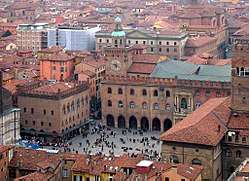
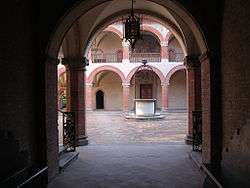
Higher education processes are being harmonised across the European Community. Nowadays the university offers 101 different "Laurea" or "Laurea breve" first-level degrees (three years of courses), followed by 108 "Laurea specialistica" or "Laurea magistrale" second-level degrees (two years). However, other 11 courses have maintained preceding rules of "Laurea specialistica a ciclo unico" or "Laurea magistrale a ciclo unico", with only one cycle of study of five years, except for medicine and dentistry which requires six years of courses. After the "Laurea" one may attain 1st level Master (one-year diploma, similar to a Postgraduate diploma). After second-level degrees are attained, one may proceed to 2nd level Master, specialisation schools (residency), or doctorates of research (PhD).
The 11 Schools (which replace the preexisting 23 faculties) are:
- School of Agriculture and Veterinary Medicine
- School of Economics, Management and Statistics
- School of Engineering and Architecture
- School of Foreign Languages and Literature, Interpretation and Translation
- School of Law
- School of Arts, Humanities, and Cultural Heritage
- School of Medicine and Surgery
- School of Pharmacy, Biotechnologies and Sport Sciences
- School of Political Sciences
- School of Psychology and Education Sciences
- School of Sciences
The university is structured in 33 departments[18] (there were 66 until 2012), organized by homogeneous research domains that integrate activities related to one or more faculty. A new department of Latin history was added in 2015.
The 33 departments are:
- Architecture - DA
- Cultural Heritage - DBC
- Chemistry "Giacomo Ciamician" - CHIM
- Industrial Chemistry "Toso Montanari" - CHIMIND
- Arts - DARvipem
- Pharmacy and Biotechnology - FaBiT
- Classical Philology and Italian Studies - FICLIT
- Philosophy and Communication Studies - FILCOM
- Physics and Astronomy - DIFA
- Computer Science and Engineering - DISI
- Civil, Chemical, Environmental, and Materials Engineering - DICAM
- Electrical, Electronic, and Information Engineering "Guglielmo Marconi" - DEI
- Industrial Engineering - DIN
- Interpreting and Translation - DIT
- Modern Languages, Literatures, and Cultures - LILEC
- Mathematics - MAT
- Experimental Medicine, Diagnostic Medicine and Specialty Medicine - DIMES
- Psychology - PSI
- Agricultural Sciences - DipSA
- Management - DiSA
- Biological, Geological, and Environmental Sciences - BiGeA
- Biomedical and Neuromotor Sciences - DIBINEM
- Education Studies "Giovanni Maria Bertin" - EDU
- Agricultural and Food Sciences - DISTAL
- Economics - DSE
- Legal Studies - DSG
- Medical and Surgical Sciences - DIMEC
- Veterinary Medical Sciences - DIMEVET
- Department for Life Quality Studies - QUVI
- Political and Social Sciences - SPS
- Statistical Sciences "Paolo Fortunati" - STAT
- Sociology and Business Law - SDE
- History and Cultures - DiSCi
Affiliates and other institutions
In the early 1950s, some students of the University of Bologna were among the founders of the review "il Mulino". On 25 April 1951 the first issue of the review was published in Bologna. In a short time, "il Mulino" became one of the most interesting reference points in Italy for the political and cultural debate, and established important editorial relationships in Italy and abroad. Editorial activities evolved along with the review. In 1954, the il Mulino publishing house (Società editrice il Mulino) was founded, which today represents one of the most relevant Italian publishers. In addition to this were initiated research projects (focusing mostly on the educational institutions and the political system in Italy), that eventually led, in 1964, to the establishment of the Istituto Carlo Cattaneo.
Notable people
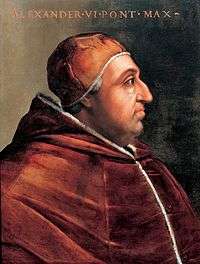

_Ca_Goldoni_Venezia.jpg)
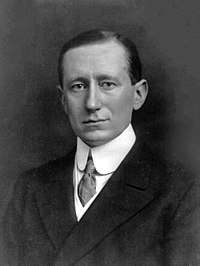
Alumni
- Cardinal Alberto Bolognetti;
- Albrecht Dürer[19][20];
- Pope Alexander VI[21];
- Augusto Righi, pioneer in the study of electromagnetism[22][23];
- Carlo Goldoni[24];
- Carlo Severini[25];
- Saint Charles Borromeo, archbishop of Milan[26];
- Diego Della Valle;
- Enzo Ferrari;
- Erasmus of Rotterdam[27];
- Gabriele Paleotti[28];
- Gasparo Tagliacozzi, pioneer of plastic and reconstructive surgery[29][30][31];
- Giacomo Matteotti[32][33];
- Giovanni Pascoli[34][35];
- Pope Gregory XIII (Ugo Boncompagni)[36][37];
- Pope Gregory XV[38];
- Guglielmo Marconi[39][40];
- Henry of Susa (Hostiensis)[41];
- Pope Innocent IX[42];
- Irnerius, founder of the School of Glossators[43];
- Laura Bassi, the world's first woman to earn a university chair in a scientific field of studies[44][45];
- Lazzaro Spallanzani[46];
- Leon Battista Alberti[47];
- Luigi Galvani[48][49][50];
- Manuel Olivencia, lawyer and academic[51];
- Marcello Malpighi[52][53];
- Michelangelo Antonioni[54][55][56];
- Nicolaus Copernicus, formulator of the heliocentric universal model[57][58];
- Cardinal Paolo Burali d'Arezzo[59];
- Paracelsus, founder of the discipline of toxicology[60];
- Petrarch[61];
- Pico della Mirandola[62][63];
- Pier Paolo Pasolini[64][65];
- Pietro Mengoli[66];
- Romano Prodi;
- Archbishop of Canterbury Thomas Becket[67];
- Torquato Tasso[68];
- Ulisse Aldrovandi[69][70];
- Umberto Eco.
Faculty and staff
See: Serafino Mazzetti, Repertorio di tutti I professori antichi e moderni della famosa Università...di Bologna (Bologna 1848).
- 11th century
- Irnerius
- 12th century
- Bulgarus
- Gratian
- Martinus Gosia
- Patriarch Heraclius of Jerusalem
- William of Tyre
- 13th century
- Benvenutus Scotivoli
- Bettisia Gozzadini
- Guido Guinizelli
- Henry of Susa (Hostiensis)
- Paul, Dominican martyr
- Rambertino Buvalelli
- Sylvester Gozzolini
- William of Saliceto
- 14th century
- Coluccio Salutati
- Francesco Petrarca (also known as Petrarch)
- Giovanni de' Marignolli
- Manuel Chrysoloras
- 15th century
- Albrecht Dürer
- Giovanni Pico della Mirandola
- Leon Battista Alberti
- Lippo Bartolomeo Dardi
- Nicolaus Copernicus
- Yuriy Drohobych (also known as Georgius de Drohobycz)
- 16th century
- Camillo Baldi
- Giovanni Antonio Magini
- Giovanni Della Casa
- Girolamo Cardano
- Girolamo Maggi
- Ignazio Danti
- Paracelsus
- Ulisse Aldrovandi
- Virgilio Malvezzi
- 17th century
- Giovanni Cassini
- Marcello Malpighi
- Niall Ó Glacáin
- Pietro Mengoli
- 18th century
- Carlo Goldoni
- Laura Bassi
- Luigi Galvani
- Maria Gaetana Agnesi
- 19th century
- Augusto Righi
- Francesco Selmi
- Giacomo Ciamician
- Giosuè Carducci
- Giovanni Pascoli
- Pellegrino Rossi
- 20th century
- Guglielmo Marconi
- Pier Paolo Pasolini
- Romano Prodi
- Umberto Eco
- 21st century
- Emilio Tomasini
- Gabriella Campadelli-Fiume
- Hamida Barmaki
- Özalp Babaoğlu
- Pier Cesare Bori
Rankings and reputation
| University rankings | |
|---|---|
| Global | |
| ARWU World[71] | 201-300 (2019) |
| THE World[72] | 168 (2020) |
| USNWR World[73] | 116 (2020) |
| QS World[74] | 177 (2020) |
The 2020 QS World University Rankings ranked the University of Bologna 177th in the world,[75] as well as 74th (1st in Italy) with reference to "academic reputation". In the 2020 THE World University Rankings, it gained the 168th place globally.[76]
In 2019, the Italian newspaper La Repubblica, in collaboration with CENSIS, has awarded the University of Bologna the 1st place in its academic ranking of Italian mega-universities (>40,000 students) for the tenth year in a row, recording its primacy in the fields of internationalization, academic structures and digital services.[4]
Points of interest
- Orto Botanico dell'Università di Bologna
- L'Orto Agrario "Filippo Re" (in Italian) (Translate to English: Google, Bing)
See also
| Wikimedia Commons has media related to University of Bologna. |
- Bologna
- Bologna declaration
- Bologna process
- Coimbra Group (a network of leading European universities)
- Collegio Superiore di Bologna (school of excellence of the University of Bologna)
- List of Italian universities
- List of medieval universities
- Medieval university
- Palazzo Poggi
- Utrecht Network
References
- Charters of foundation and early documents of the universities of the Coimbra Group, Hermans, Jos. M. M., ISBN 90-5867-474-6
- Nuria Sanz, Sjur Bergan: "The heritage of European universities", 2nd edition, Higher Education Series No. 7, Council of Europe, 2006, ISBN , p. 136
- "Ranking QS: l'Università di Bologna ancora nella top 200, e continua a crescere". 2019-06-19.
- Dieci volte prima: l’Università di Bologna ancora al top in Italia tra i mega atenei.
- "Europe - Ranking Web of Universities". www.webometrics.info.
- Nove secoli di storia - Università di Bologna
- "Schools". University of Bologna. Retrieved 22 December 2015.
- "Campuses and Structures". University of Bologna. Retrieved 22 December 2015.
- Top Universities Archived 2008-01-15 at the Wayback Machine World University Rankings Retrieved 2010-1-6
- Our History - Università di Bologna
- Paul L. Gaston (2012). The Challenge of Bologna: What United States Higher Education Has to Learn from Europe, and Why It Matters That We Learn It. Stylus Publishing, LLC. p. 18. ISBN 978-1-57922-502-5.
- Paul F. Grendler, The Universities of the Italian Renaissance (JHU Press, 2002), 6.
- David A. Lines, “The University and the City: Cultural Interactions”, in A Companion to Medieval and Renaissance Bologna, ed. Sarah Rubin Blanshei (Leiden: Brill, 2017), 437–8.
- A University Built by the Invisible Hand, by Roderick T. Long. This article was published in the Spring 1994 issue of Formulations, by the Free Nation Foundation.
- "University of Bologna | History & Development". Encyclopedia Britannica. Retrieved 2017-08-21.
- Berman, Law and Revolution, ch. 3; Stein, Roman Law in European History, part 3.
- See Corpus Juris Civilis: Recovery in the West
- List of the Departments of the University of Bologna
- "Albrecht Dürer | German artist". Encyclopedia Britannica. Retrieved 2019-04-26.
- "Albrecht Dürer's Life: Second Journey to Venice". www.durerart.com. Retrieved 2019-04-26.
- "Alexander VI | Biography, Legacy, & Facts". Encyclopedia Britannica. Retrieved 2019-04-26.
- "Augusto Righi". www.fgm.it. Retrieved 2019-04-26.
- "Righi, Augusto | Encyclopedia.com". www.encyclopedia.com. Retrieved 2019-04-26.
- "The University from the 12th to the 20th century - University of Bologna". www.unibo.it. Retrieved 2019-04-26.
- Marchisotto, Elena Anne; Smith, James T. (2007-12-05). The Legacy of Mario Pieri in Geometry and Arithmetic. Springer Science & Business Media. ISBN 9780817646035.
- "Biography of St. Charles Borromeo". Saint Charles Borromeo Catholic Church. Retrieved 2019-04-26.
- "Erasmus | Biography & Facts". Encyclopedia Britannica. Retrieved 2019-04-26.
- "PALEOTTI, Gabriele in "Dizionario Biografico"". www.treccani.it (in Italian). Retrieved 2019-04-26.
- "Gaspare Tagliacozzi (1545-99)". broughttolife.sciencemuseum.org.uk. Retrieved 2019-04-26.
- Zimbler, Marc S. (2001-10-01). "Gaspare Tagliacozzi (1545-1599): Renaissance Surgeon". Archives of Facial Plastic Surgery. 3 (4): 283–284. doi:10.1001/archfaci.3.4.283. ISSN 1521-2491. PMID 11710869.
- Ménard, Sophie (January 2019). "An Unknown Renaissance Portrait of Tagliacozzi (1545–1599), the Founder of Plastic Surgery". Plastic and Reconstructive Surgery – Global Open. 7 (1): e2006. doi:10.1097/GOX.0000000000002006. ISSN 2169-7574. PMC 6382240. PMID 30859024.
- "Giacomo Matteotti | Italian social leader". Encyclopedia Britannica. Retrieved 2019-04-26.
- "Biography". House-Museum Giacomo Matteotti. Retrieved 2019-04-26.
- "Giovanni Pascoli, appointed professor at the University of Bologna,..." Getty Images (in Italian). Retrieved 2019-04-26.
- "Giovanni Pascoli | Italian poet". Encyclopedia Britannica. Retrieved 2019-04-26.
- "Pope Gregory XIII: Accomplishments & Legacy". Study.com. Retrieved 2019-04-26.
- "Gregory Xiii | Encyclopedia.com". www.encyclopedia.com. Retrieved 2019-04-26.
- "Gregory XV | pope". Encyclopedia Britannica. Retrieved 2019-04-26.
- "Marconi itinerary in Bologna and surroundings". Bologna Welcome. Retrieved 2019-04-26.
- "Guglielmo Marconi | Italian physicist". Encyclopedia Britannica. Retrieved 2019-04-26.
- Brundage, James A. (2014-06-11). Medieval Canon Law. Routledge. ISBN 9781317895343.
- "Innocent Iv | Encyclopedia.com". www.encyclopedia.com. Retrieved 2019-04-26.
- "Irnerius | Italian legal scholar". Encyclopedia Britannica. Retrieved 2019-04-26.
- "Laura Bassi - University of Bologna". www.unibo.it. Retrieved 2019-04-26.
- "Laura Bassi | Italian scientist". Encyclopedia Britannica. Retrieved 2019-04-26.
- "Lazzaro Spallanzani (1729-1799) | The Embryo Project Encyclopedia". embryo.asu.edu. Retrieved 2019-04-26.
- "Leon Battista Alberti | Italian architect and author". Encyclopedia Britannica. Retrieved 2019-04-26.
- "Luigi Galvani - University of Bologna". www.unibo.it. Retrieved 2019-04-26.
- "Luigi Galvani | Encyclopedia.com". www.encyclopedia.com. Retrieved 2019-04-26.
- "Luigi Galvani". grants.hhp.coe.uh.edu. Retrieved 2019-04-26.
- "Manuel Olivencia receives Premio Pelayo para Juristas de Reconocido Prestigio award". Cuatrecasas. Retrieved 2019-04-26.
- "Marcello Malpighi - University of Bologna". www.unibo.it. Retrieved 2019-04-26.
- "Marcello Malpighi | Italian scientist". Encyclopedia Britannica. Retrieved 2019-04-26.
- "Michelangelo Antonioni | Italian director". Encyclopedia Britannica. Retrieved 2019-04-26.
- "Spotlight: Michelangelo Antonioni". www.ecufilmfestival.com. 2018-03-30. Retrieved 2019-04-26.
- "Michelangelo Antonioni | Encyclopedia.com". www.encyclopedia.com. Retrieved 2019-04-26.
- Rutkowski, Boleslaw; Muszytowski, Marek; Ostrowski, Janusz (May 2011). "Nicolaus Copernicus: not only a great astronomer but also a physician". Journal of Nephrology. 24 Suppl 17: S25–32. doi:10.5301/JN.2011.6490. ISSN 1724-6059. PMID 21614776.
- "Studying at University of Bologna". Plone site. Retrieved 2019-04-26.
- "Comune di Itri - Sito comunale". www.comune.itri.lt.it. Retrieved 2019-04-26.
- "Famous people, guests and illustrious students - University of Bologna". www.unibo.it. Retrieved 2019-04-26.
- Foundation, Poetry (2019-04-25). "Petrarch". Poetry Foundation. Retrieved 2019-04-26.
- Copenhaver, Brian (2016), "Giovanni Pico della Mirandola", in Zalta, Edward N. (ed.), The Stanford Encyclopedia of Philosophy (Fall 2016 ed.), Metaphysics Research Lab, Stanford University, retrieved 2019-04-26
- "Giovanni Pico della Mirandola, count di Concordia | Italian scholar". Encyclopedia Britannica. Retrieved 2019-04-26.
- "Pier Paolo Pasolini". Bologna Welcome. Retrieved 2019-04-26.
- "Pier Paolo Pasolini | Italian author and director". Encyclopedia Britannica. Retrieved 2019-04-26.
- "Pietro Mengoli (1626-1686)". www-history.mcs.st-and.ac.uk. Retrieved 2019-04-26.
- "Saint Thomas Becket | Biography, Death, & Significance". Encyclopedia Britannica. Retrieved 2019-04-26.
- "Torquato Tasso | Encyclopedia.com". www.encyclopedia.com. Retrieved 2019-04-26.
- "Ulisse Aldrovandi - University of Bologna". www.unibo.it. Retrieved 2019-04-26.
- "Ulisse Aldrovandi | Italian naturalist". Encyclopedia Britannica. Retrieved 2019-04-26.
- "Academic Ranking of World Universities 2019". shanghairanking.com. 20-08-2019. Check date values in:
|date=(help) - "World University Rankings". timeshighereducation.com. 11 September 2019.
- U.S. News Education: Best Global Universities 2020
- "QS World University Rankings 2019". topuniversities.com. 19 June 2019.
- "QS World University Rankings 2019". 2019-06-19.
- "THE World University Rankings 2020". 2019-09-12.
External links
- University of Bologna Website (in English)
- University of Bologna Website (in Italian) (Translate to English: Google, Bing) (also has a Chinese version)
- University of Bologna in Buenos Aires (in Spanish) (Translate to English: Google, Bing)
- Beautiful universities around the world